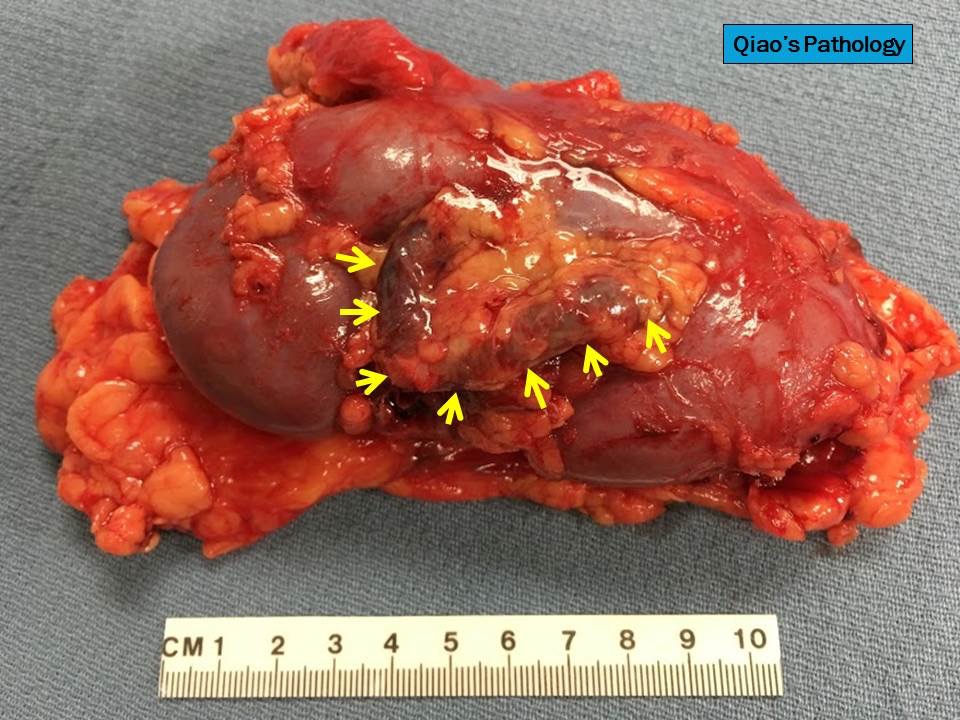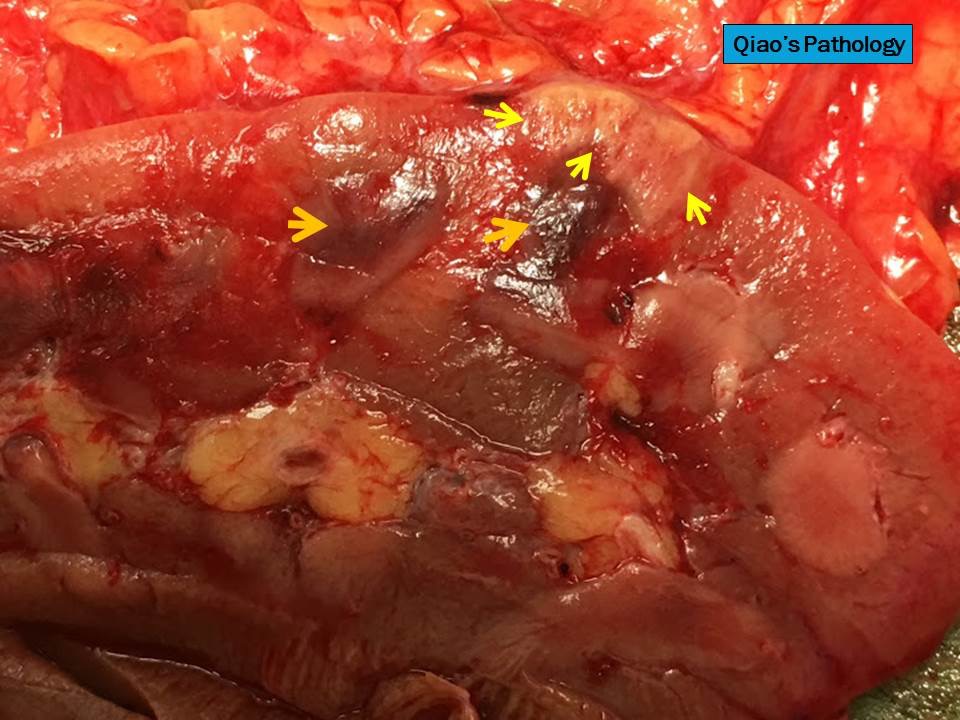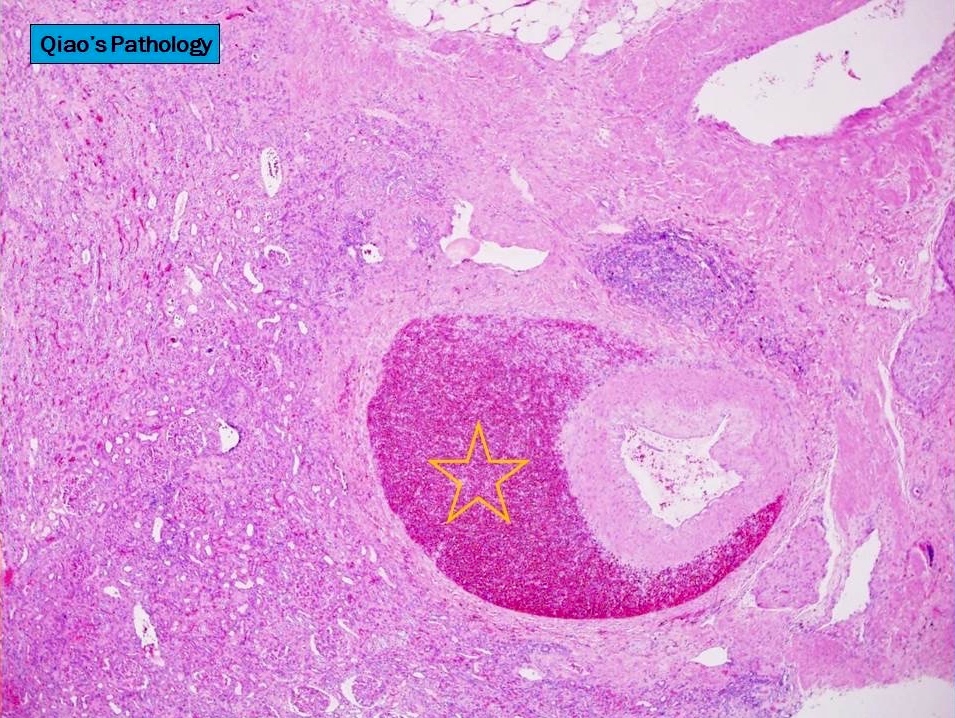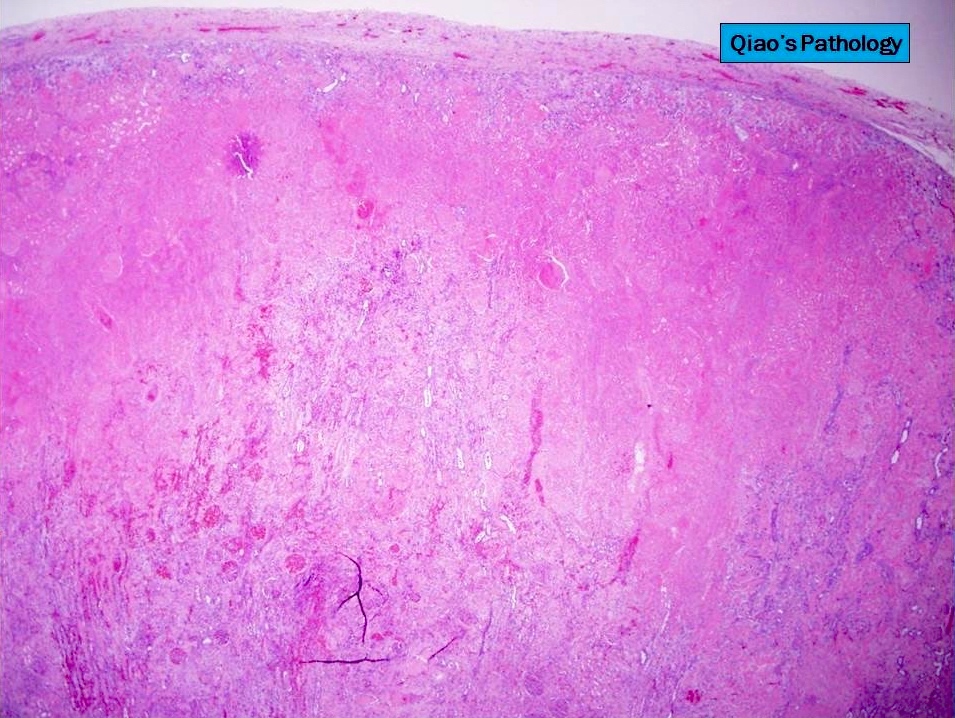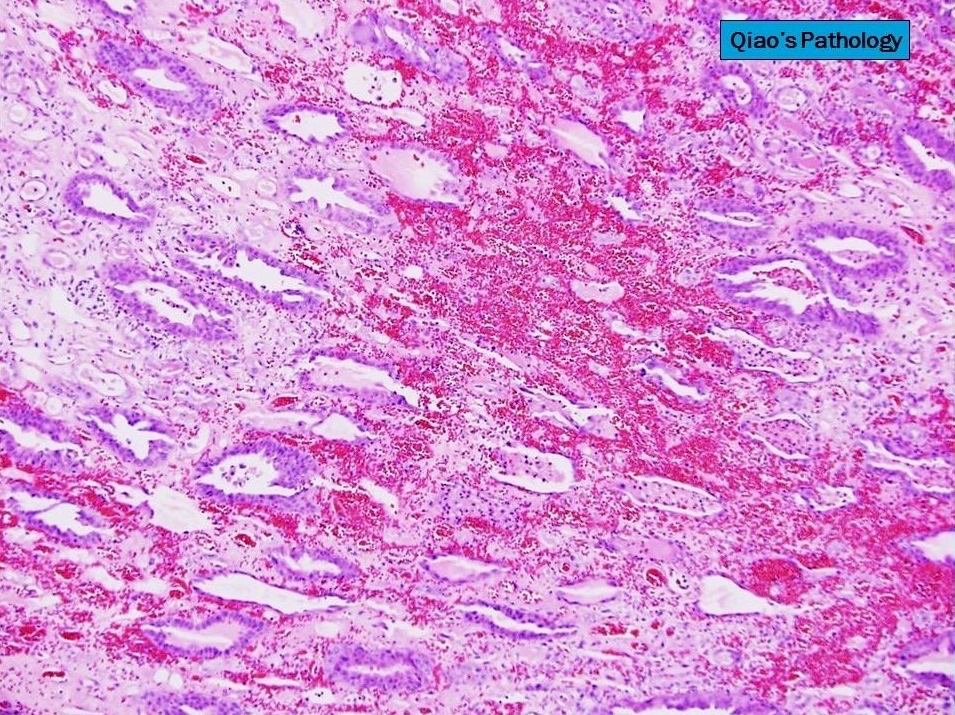Table of Contents
Definition / general | Essential features | Epidemiology | Sites | Pathophysiology | Clinical features | Diagnosis | Laboratory | Radiology description | Case reports | Treatment | Gross description | Gross images | Microscopic (histologic) description | Microscopic (histologic) images | Additional references | Board review style question #1 | Board review style answer #1Cite this page: Qiao JH. Spontaneous renal artery dissection. PathologyOutlines.com website. https://www.pathologyoutlines.com/topic/kidneynontumorsrad.html. Accessed April 25th, 2024.
Definition / general
- Spontaneous renal artery dissection is a rare entity with fewer than 200 cases reported in the literature
Essential features
- SRAD is a rare condition and accurate clinical diagnosis is often delayed
- Clinical presentation of SRAD is nonspecific, including hypertension, hematuria, flank pain or lower back pain as in renal colic
- SRAD is more common in male patients
- SRAD usually is unilateral but 10 - 15% of cases involve both renal arteries
- The consequence of SRAD is renal hypoperfusion, severe hypertension, renal infarction and decreased or lost renal function
- Treatment includes anticoagulation, revascularization and nephrectomy
Epidemiology
- Healthy men in fourth to sixth decade of life with 4:1 male to female ratio
Sites
- Mostly involves one kidney; about 10 - 15% of cases have bilateral involvement
Pathophysiology
- Renal vascular hypertension, renal insufficiency and renal infarction
Clinical features
- Flank pain, severe hypertension and renal insufficiency
Diagnosis
- Abdominal CT with contrast and angiogram
Laboratory
- Decreased renal function tests
Radiology description
- CT scan often shows renal infarction, angiogram remains the definitive study (Rev Urol 2007;9:156)
Case reports
- Six cases in 33 - 55 year old men complicated with renal infarction (Clin Kidney K 2012;5:261)
Treatment
- Anticoagulation, endovascular management (stenting or coiling) and nephrectomy
Gross description
- Dilated renal artery at the hilar region of the affected kidney and variable sized renal infarction
Microscopic (histologic) description
- Renal artery dissection with elongated hematoma in renal artery wall, renal cortical ischemic infarction and renal papillae hemorrhagic infarction
Microscopic (histologic) images
Additional references
Board review style question #1
All for the following statements about spontaneous renal artery dissection are correct, except
- Spontaneous renal artery dissection is a rare clinical condition
- The entity is more commonly seen in male patients
- Clinical presentation includes frank pain and hypertension
- Spontaneous renal artery dissection usually involves both renal arteries
Board review style answer #1
D. Spontaneous renal artery dissection usually involves both renal arteries. Spontaneous renal artery dissection usually involves one renal artery; bilateral disease is only encountered in 10 - 15% of SRAD cases.
Comment Here
Reference: Spontaneous Renal Artery Dissection (SRAD)
Comment Here
Reference: Spontaneous Renal Artery Dissection (SRAD)



